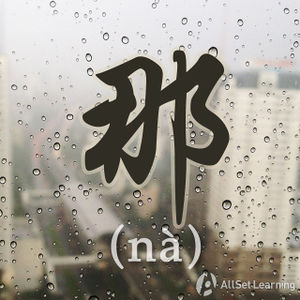Difference between revisions of "Measure words with "this" and "that""
(→Books) |
|||
| Line 43: | Line 43: | ||
=== Books === | === Books === | ||
| − | + | {{Source|Basic Patterns of Chinese Grammar|33}} | |
[[Category:A2 grammar points]] | [[Category:A2 grammar points]] | ||
Revision as of 07:18, 24 October 2017
-
Level
-
Similar to
-
Used for
-
Keywords
In English, when you refer to "this table" or "that girl" you only need two words: "this" or "that" plus the noun you're referring to. In Chinese, though, you also need a measure word in the middle between the two. In the very beginning you can get away with using 个 (gè) for everything, but pretty soon you're going to have to start using other measure words in these simple phrases.
Structure
If you use 这 (zhè) or 那 (nà) before a noun, you also need to include a measure word before the noun.
这 / 那 + Measure Word + Noun
Examples
Note: In this usage, the tone of 个 (gè) tends to soften, so it's represented below as a neutral tone.
- 那 个 人 that person
- 这 本 书 this book
- 那 件 事 that matter (in the sense of business, affair, or thing)
- 这 瓶 啤酒 this bottle of beer
- 那 个 房间 that room
- 那 台 电脑 that new computer
- 这 只 猫 that cat
- 那 条 河 that river
- 这 件 衣服 this piece of clothing
Although we didn't get into it here, the same pattern holds true when you use 哪 (nǎ) to ask "which?"



